
Surprisingly unhealthy foods
Many foods have an aura of healthiness through wholesome-sounding names, or derivation from a nation renowned for its healthy cuisine, but in fact are surprisingly unhealthy. And then some packaged foods are marginally healthier than the junk foods they are meant to mimic, but are still don’t provide a measurable boost to your nutrition. In a smaller but no less calorie-packed category are foods that are nutritious in moderation but difficult to eat in small quantities.
Montreal-based registered dietitian Kim Arrey identifies and explains more of these surprisingly unhealthy foods.
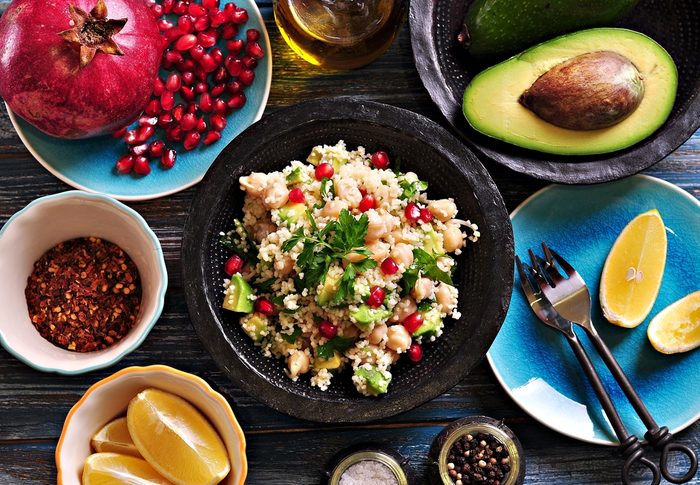
1. Couscous
It may look like a whole grain, but couscous (pronounced koose-koose) is actually a tiny pasta that is a staple of some North African nations, especially served with meat stews. Elsewhere, its unwarranted healthy reputation probably stems from its popularity among vegetarians and foodies owing to its versatility and unique texture.
“It’s really just refined wheat,” says Arrey, with about equal nutritional value to white pasta. “You have to look for the whole-wheat couscous,” she says. Opt for bulgur, cracked wheat or quinoa as healthier alternatives.
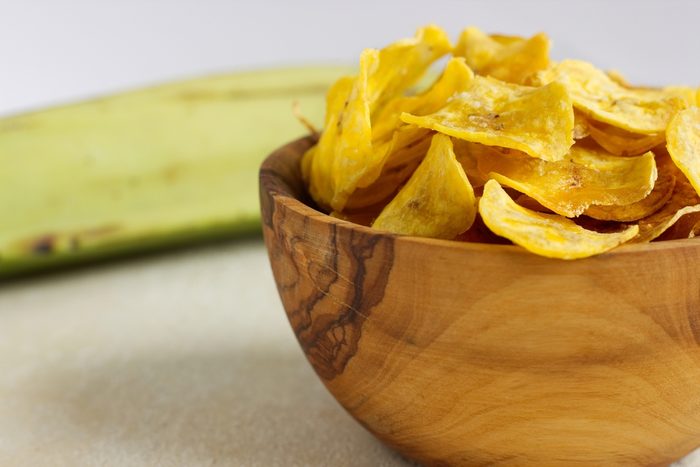
2. Banana and plantain chips
Some of us just love crunching on crisp, salty chips. But if you’re trying to steer clear of potato chips and think that plantain chips are the more virtuous, less-refined alternative, think again. Fried chips are fried chips, whether they’re made of potato, banana or the less-sweet banana relative plaintain.
“You have to tell yourself, wait a minute, this isn’t really different from potato chips,” says Arrey. Many of these chips have sugar and salt added, not to mention a high fat content.
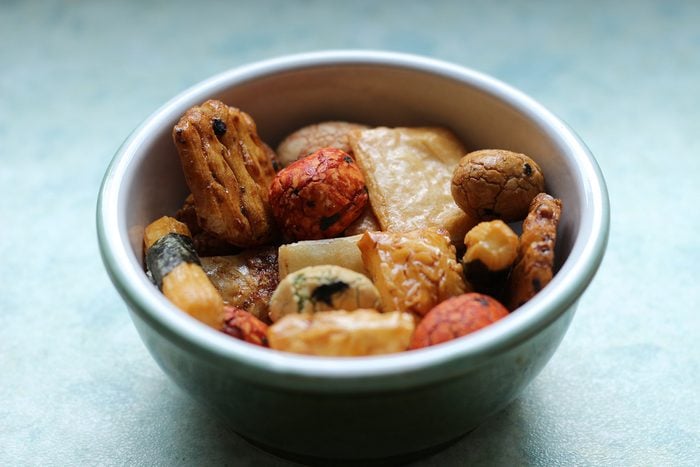
3. Japanese rice crackers
But it has seaweed in it! But it’s from Japan, a nation of healthy eaters! You may hear this refrain to justify a beer-fueled snack fest of these addictive little crackers also known by their Japanese name senbei, but they are still far from being a health-boosting complement to your diet.
Seaweed is indeed a health food, but there’s only a small amount used as seasoning in most Japanese cracker mixes on the shelves of your grocery store. “The crackers themselves are just refined rice flour,” Arrey says.
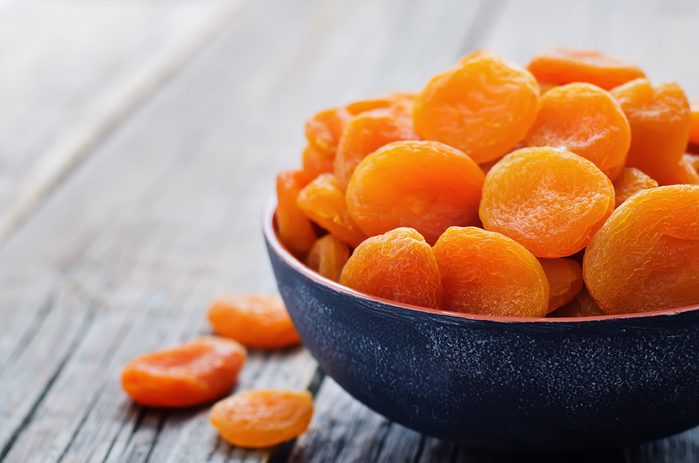
4. Dried apricots
“Eating any dried fruit can be a conundrum,” says Arrey. “Dried fruits are so nutritious and dense in vitamins, but they’re concentrated in calories,” she says. “For instance, I could probably eat two apricots, but if I eat the dried halves, I could easily eat six or eight of them.”
And dentists warn against snacking on dried fruits alone, preferring that they be eaten as part of a meal, as dried fruit has a tendency to cling to tooth surfaces and cause cavities. A better route is to stick with fresh fruit, especially at snacktime, or to eat dried fruit in moderation, perhaps with granola or cereal.
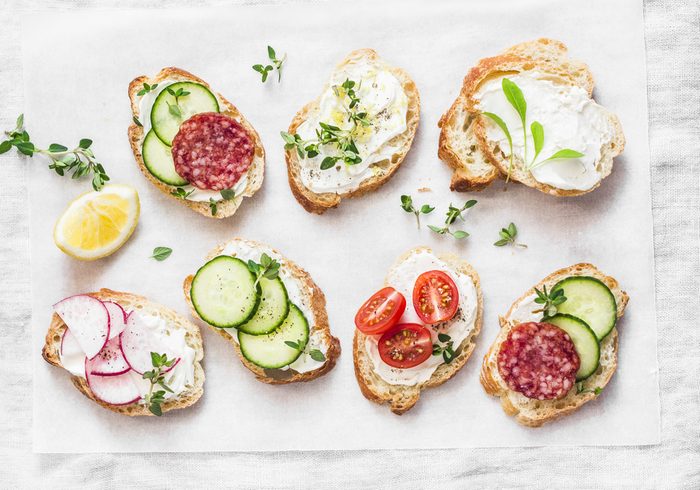
5. Cream cheese
Rich, delicious cream cheese on a bagel or crackers is widely considered a wholesome breakfast or snack. But hold the butter knife-it’s not as healthy as you might think. “It’s got a wonderful mouth feel,” admits Arrey. “I know it really tastes good on your bagel. But it’s high in fat and doesn’t have a lot of protein or calcium,” she says.
And beware of light cream cheeses. “They’ve cut the calories and fat but haven’t added any calcium or protein, so nutritionally it’s not better,” she says. A better spreadable choice is ricotta cheese, Arrey says.
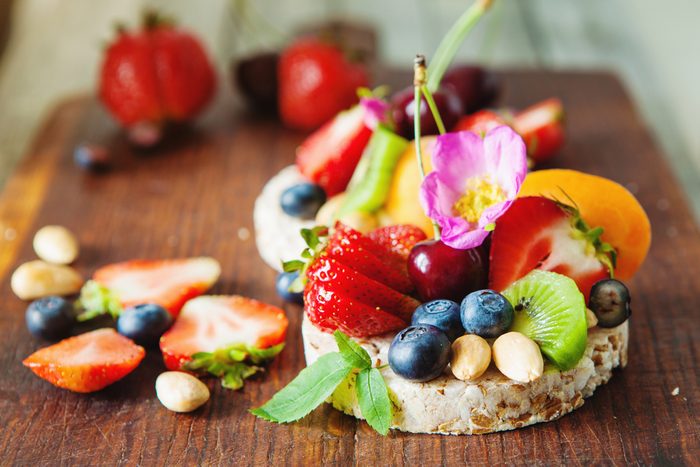
6. Round rice crackers
For those who enjoy crackers but must avoid wheat-based versions, rice crackers are an obvious choice. What makes them seem healthy is this very association with wheat-restricted diets, which means they are found in health-food stores and sometimes in the specialty foods aisle of conventional grocers. However, they are merely a refined product high in sodium (and sometimes artificial flavourings) and lacking fibre.
“If you have a choice between having a regular water cracker or a rice cracker and neither have fibre, then pick which one you like the taste of,” says Arrey.
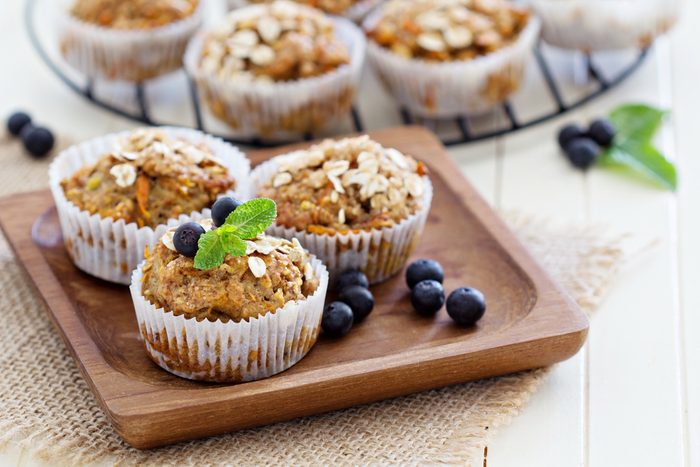
7. Muffins
“Most muffins are cakes in a dress,” says Arrey, referring to the fluted paper cups they’re baked in. She’s come across supersize muffins that pack an astonishing 800 calories.
Unfortunately, these are often the very muffins we reach for when buying breakfast, assuming they are a fast fuel that clocks in somewhere between innocuous and healthy. To really ensure your muffin is healthy and not oil-drenched, bake your own.
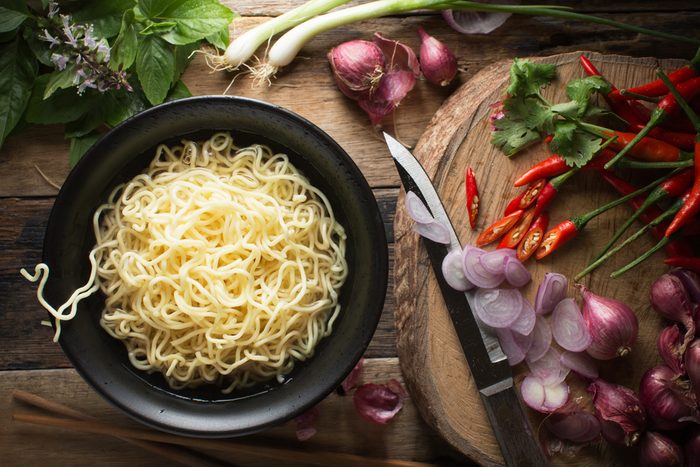
8. Ramen noodles
Shown with steamed vegetables (that are not included) on the packaging, it’s no wonder we think ramen noodles are a health food. It could also be because we merely add water and a small package of seasoning to cook them, or because of their Japanese provenance that we think they are healthy. They’re not.
“They’re just noodles in salty broth,” says Arrey. Sorry, university students. Ramen noodles might fill your stomach cheaply and quickly, but without the add-ons of fresh veggies and protein, they’re not a nutritious addition to your diet when eaten alone.
